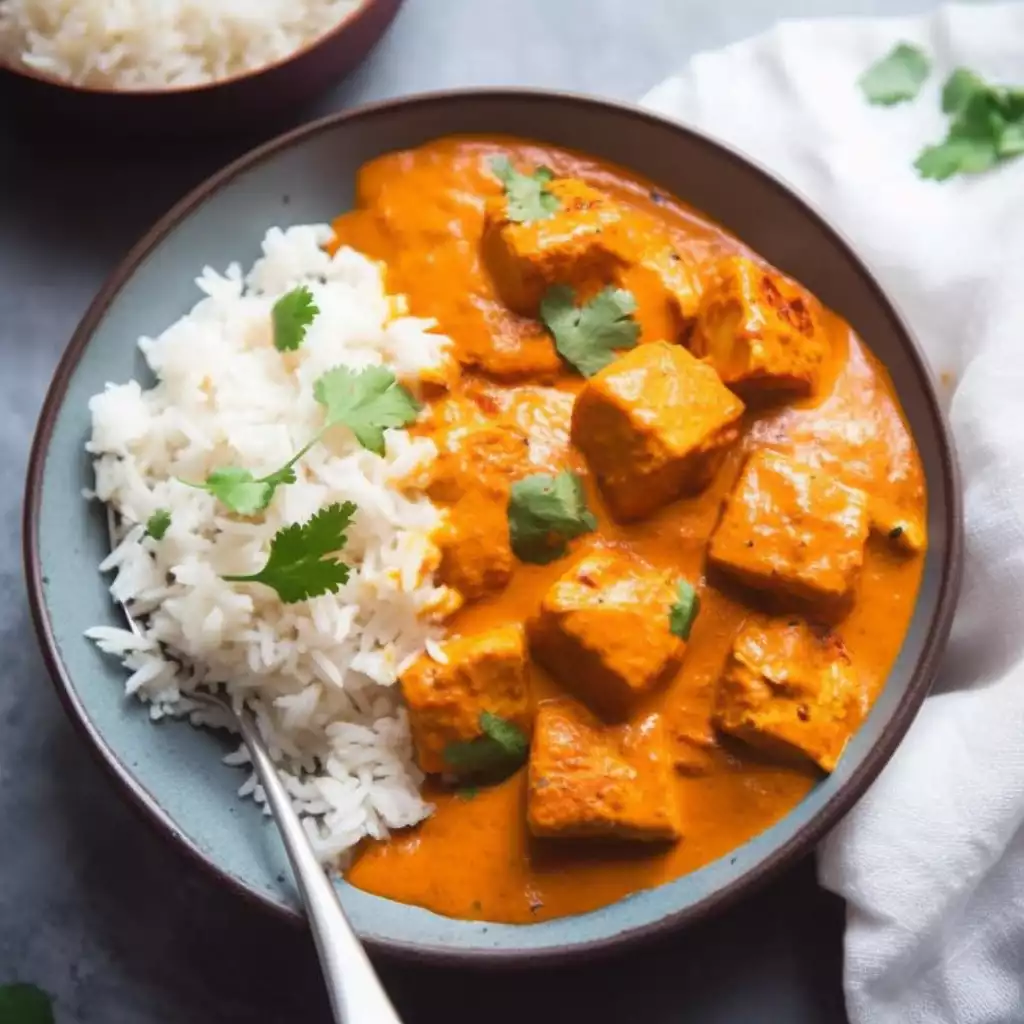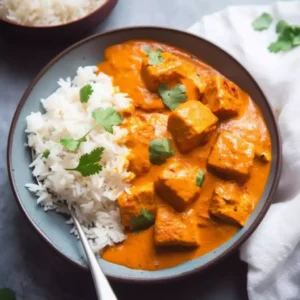
Paneer Tikka Masala, a beloved dish in Indian cuisine, is a tantalizing blend of succulent paneer cubes marinated in a rich, aromatic sauce. This dish has its roots in the culinary traditions of North India, where it has earned a place as a cherished comfort food.
The recipe combines the creamy texture of paneer, a fresh cheese popular in South Asian cooking, with a medley of spices and flavors that dance on the taste buds.
While it may seem daunting to recreate this restaurant favorite at home, fear not, for with a little patience and attention to detail, you can enjoy the authentic flavors of paneer tikka masala in the comfort of your kitchen.
Expert Tip: Adjust the level of spice according to your preference by increasing or decreasing the amount of chilli powder and paprika in the marinade and sauce.
Paneer Cubed: Paneer provides a creamy texture and a mild, milky flavor that pairs perfectly with the bold spices of the marinade and sauce.
Yoghurt: Yoghurt serves as the base of the marinade, tenderizing the paneer while imparting a subtle tanginess to the dish.
Ginger Paste and Garlic Paste: These aromatic pastes infuse the marinade and sauce with a depth of flavor and warmth that is characteristic of Indian cuisine.
Spices: Each spice adds its own unique flavor profile to the dish, from the earthy notes of turmeric and cumin to the fiery kick of chilli powder and paprika.
Salt: Salt enhances the flavors of the other ingredients, balancing out the sweetness of the paneer and the acidity of the tomatoes.
Oil: Vegetable oil is used for both grilling the marinated paneer and sautéing the onions and spices for the masala sauce.
Onion: Finely chopped onions form the aromatic base of the masala sauce, providing sweetness and depth to the dish.
Canned Tomatoes: Canned tomatoes form the backbone of the masala sauce, lending a rich, tangy flavor and vibrant red color to the dish.
Double Cream: Double cream adds richness and creaminess to the masala sauce, creating a luscious texture that coats the paneer cubes.
Coriander: Freshly chopped coriander leaves are used as a garnish, adding a pop of color and a burst of freshness to the finished dish.
Expert Tip: To prevent the paneer from becoming too dry, brush it with oil before grilling and avoid overcooking.
Expert Tip: For extra smoky flavor, you can grill the marinated paneer cubes over charcoal or on a barbecue.
Yes, homemade paneer can be used in this recipe. Just make sure it is firm enough to hold its shape when grilled.
Marinating the paneer allows it to absorb the flavors of the spices, resulting in a more flavorful dish. However, if you’re short on time, you can marinate it for at least 30 minutes.
Yes, coconut milk can be used as a substitute for double cream to make a dairy-free version of this dish. However, keep in mind that it will alter the flavor profile slightly.
Paneer tikka masala can be stored in an airtight container in the refrigerator for up to 3-4 days. Reheat gently on the stovetop or in the microwave before serving.
Yes, paneer tikka masala can be frozen for up to 2-3 months. Allow it to cool completely before transferring it to freezer-safe containers. Thaw overnight in the refrigerator before reheating.
Here are some more recipes for you to enjoy! If you my recipes don’t forget to rate and leave a comment.
If you have any recipe suggestions, please do not hesitate to ask me. A great way to stay in contact with me is through Instagram, Facebook, Twitter and YouTube. Don’t forget to tag me @CookwithNabeela in your recipe photos!

Subscribe now to receive my latest recipes directly in your inbox. Stay up-to-date and never miss out!

I love to cook! I want to share with you my favourite, delicious family-friendly recipes. I want to inspire you to create fantastic food for your family every day.
Latest comments (1)
Came out great
Thx